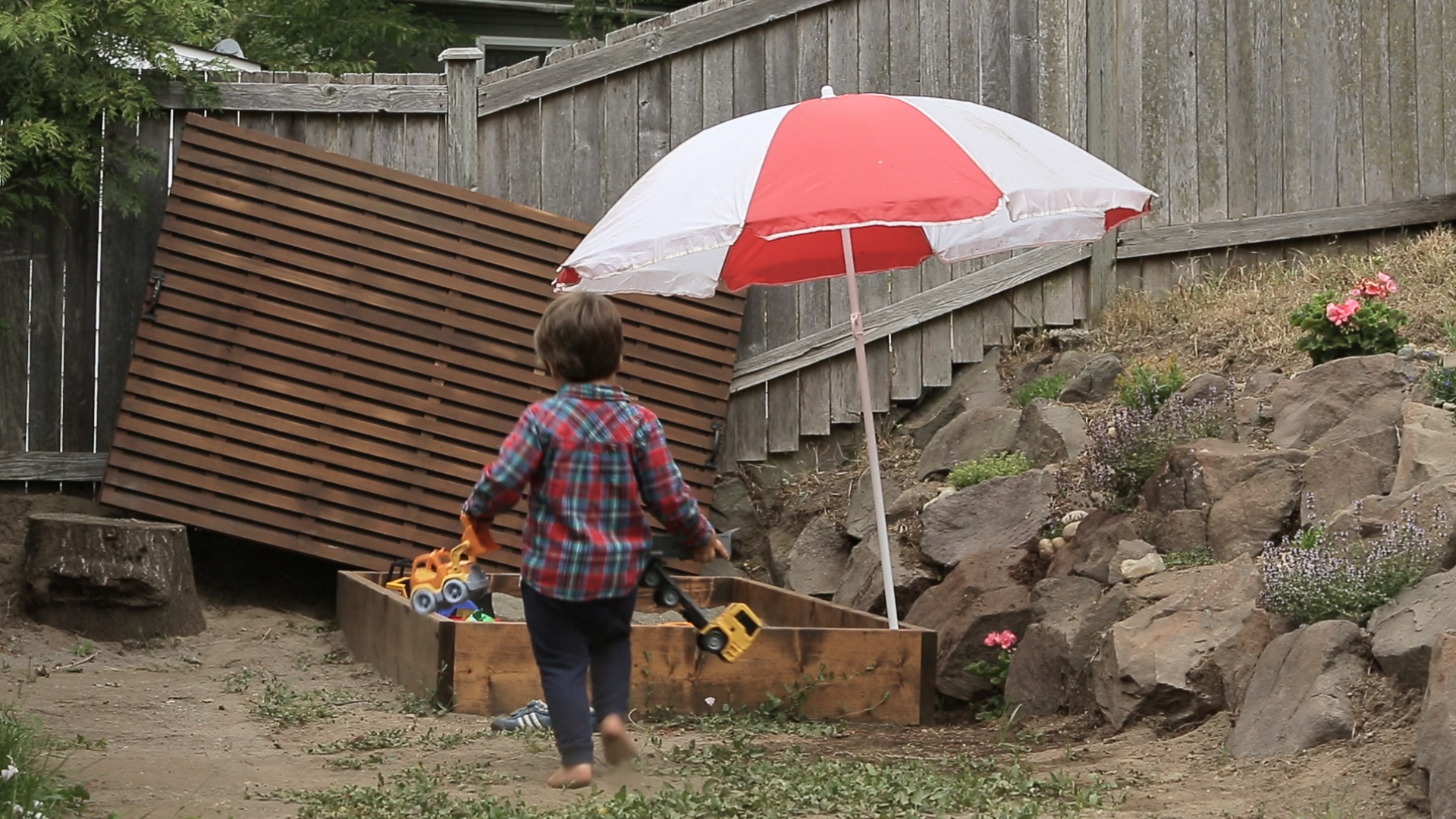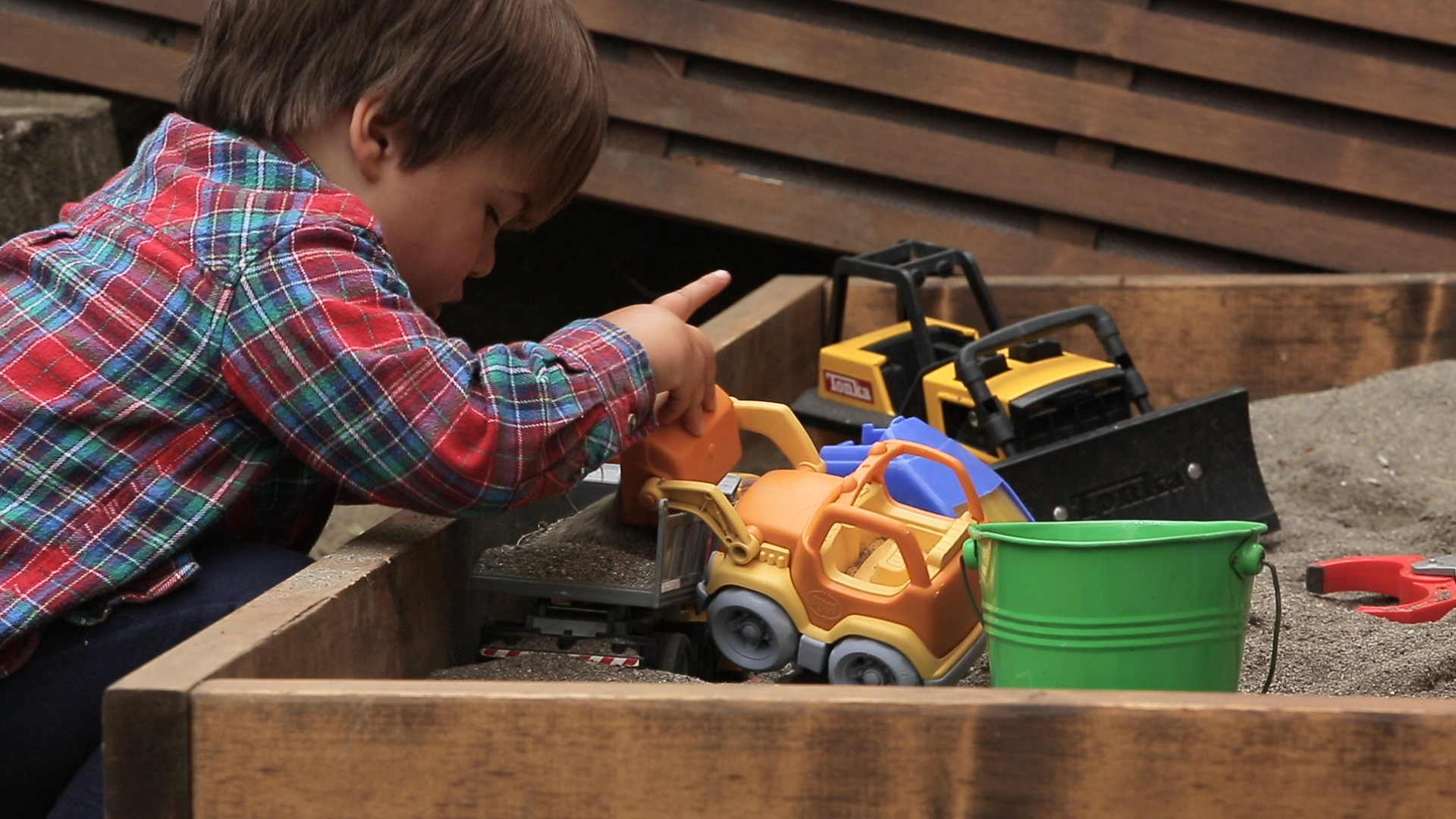How to Build a DIY Sandbox

"Sit back and relax while your kids enjoy a sandy beach in your backyard!"
Materials
- 2- SPF 2" x 10" x 10'
- 2 - White Wood 1" x 2" x 8'
- 1 - White Wood 2" x 2" x 8'
- 1 - 4' x 6' Lattice (Moderna Pattern)
- 20 - 50 lb Bags of Sand
- 1 Qt - Penofin Verde (Bitterwood)
- Rags
- Disposable Gloves
- 150-Grit Sandpaper
- 1 1/2" Exterior Star Drive Screws
- 2" Exterior Star Drive Screws
- 8 - 4 1/2" Heavy Duty Flat Head Screws
- 6x8 Brown Polyester Tarp
- 1/2" Staples
- Landscape Fabric
- 2 - 5 1/2" Black Door Pulls
- Optional: Umbrella
- 1" PVC Pipe
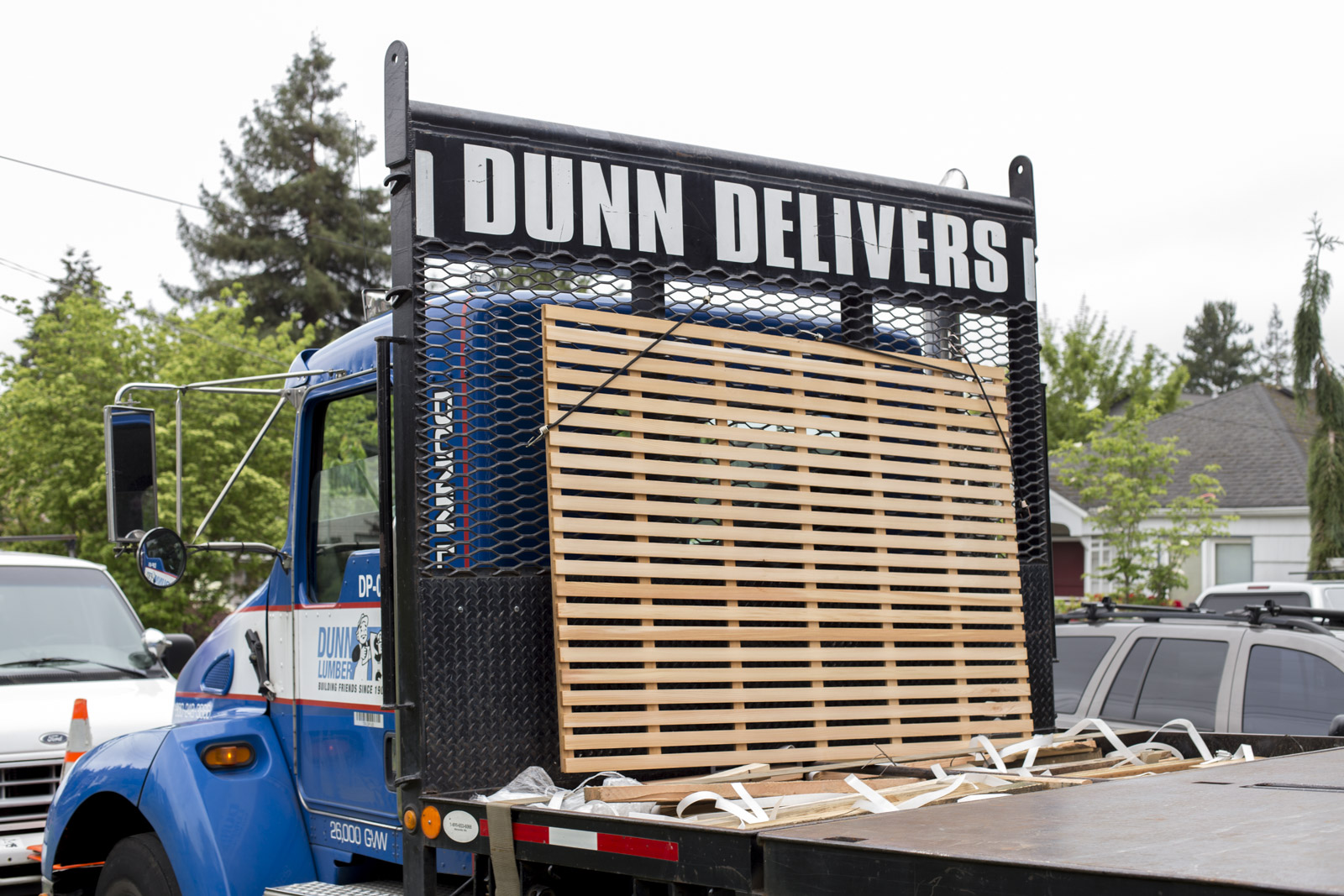
Do you know that Dunn Lumber offers $60 local delivery? Today we were really excited, because that meant we got all the sand we needed and cedar lattice delivered right to our front door, and didn't have to try and fit it into the cute little DIY mobile.
Step 1: Cut the framing lumber
We used a circular saw to make our cuts. You can also use a sliding chop saw that can cut 10" wide material. Cut the pieces to the following dimensions for a 4' x 6' sandbox:
Cut the two-by-ten ten-footers into two 72" and two 45" lengths. That is, one 72" and one 45" piece out of each board.
Cut one 72" length out of the one-by-two 8' and two 45" pieces out of the second one-by-two.
Cut one 72" length from the two-by-two.
 Step 2: Staining wood for DIY sandbox
Step 2: Staining wood for DIY sandbox
These first two steps are good "night before" steps, because the stain will need to fully dry before continuing on. We used Penofin's Verde stain in the color Bitterwood. This is a great option because it's a high-quality decking stain in a little container. So, lots of bang for your buck! It's also environmentally friendly and safe for use around children and pets.
Fair warning: it does have a strong smell. Use a rag to apply the stain to the cut lumber and to the lattice. Let it sit for 10-20 minutes, depending on how dark you'd like it to be, then use another rag to wipe off the excess stain. This is a very important step! If you don't wipe it off, the stain will get a sticky coating on the top that will be a pain to deal with later. Allow the stain to fully dry before continuing on to step 3. (Dry times will vary due to temperature and humidity.)
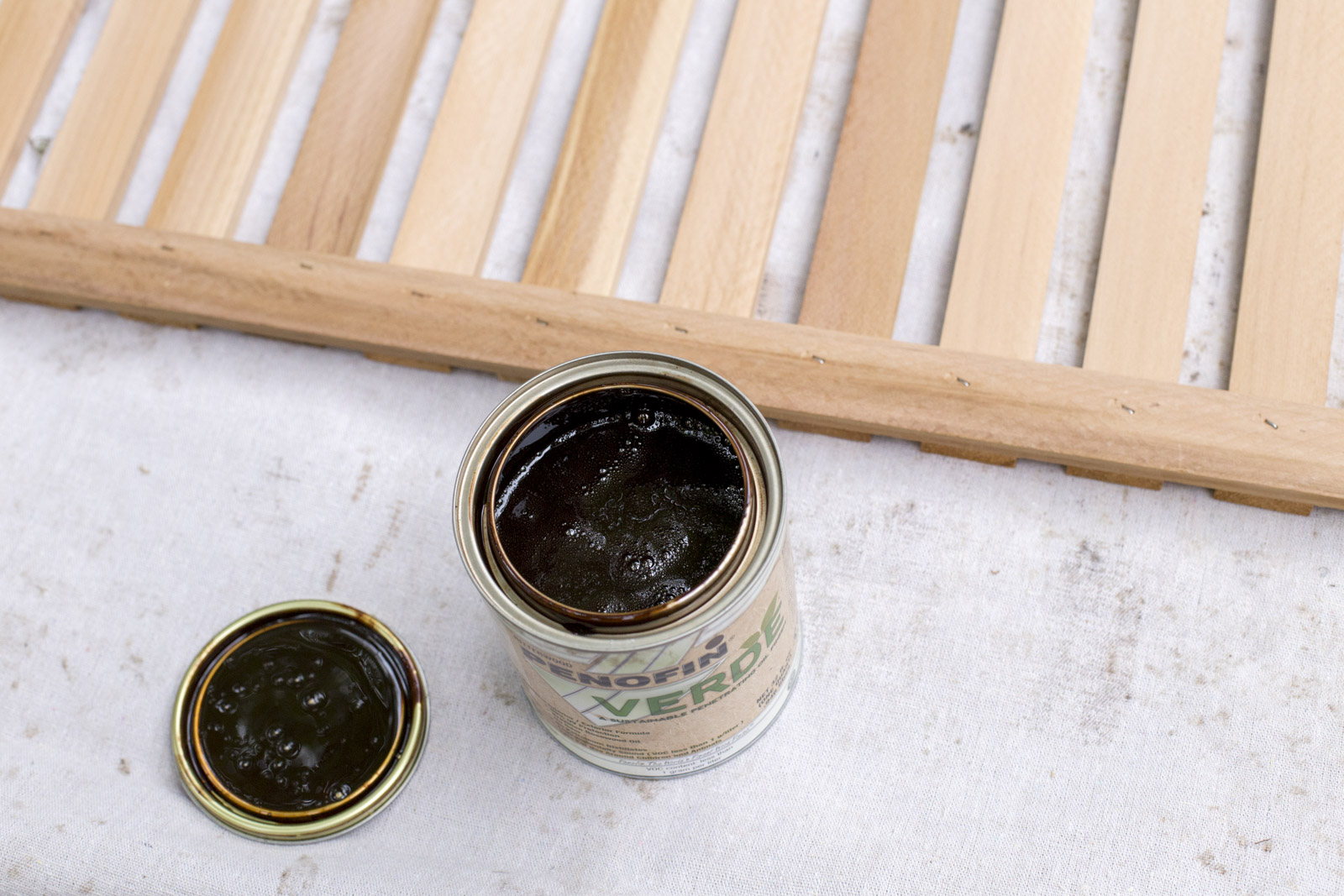
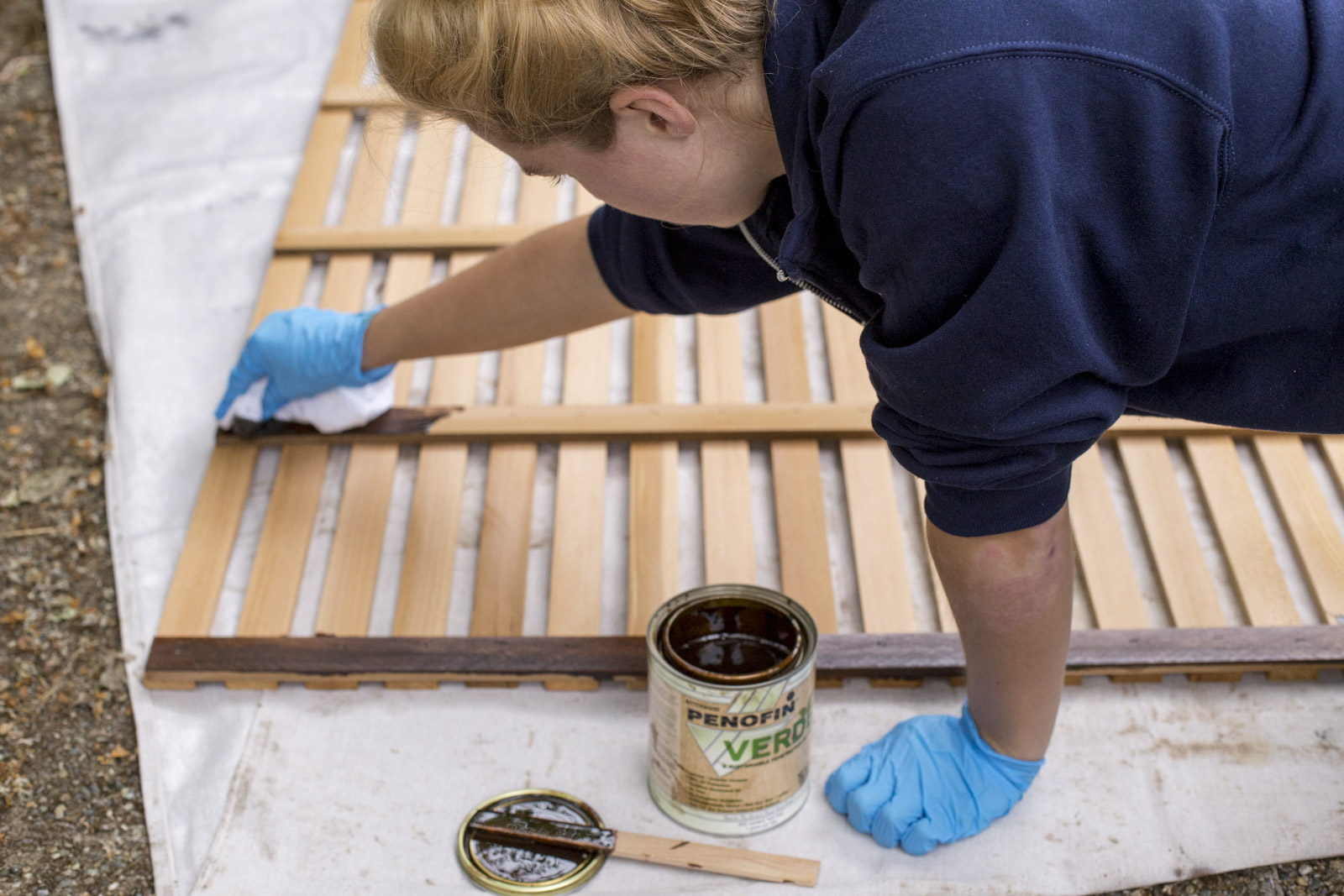
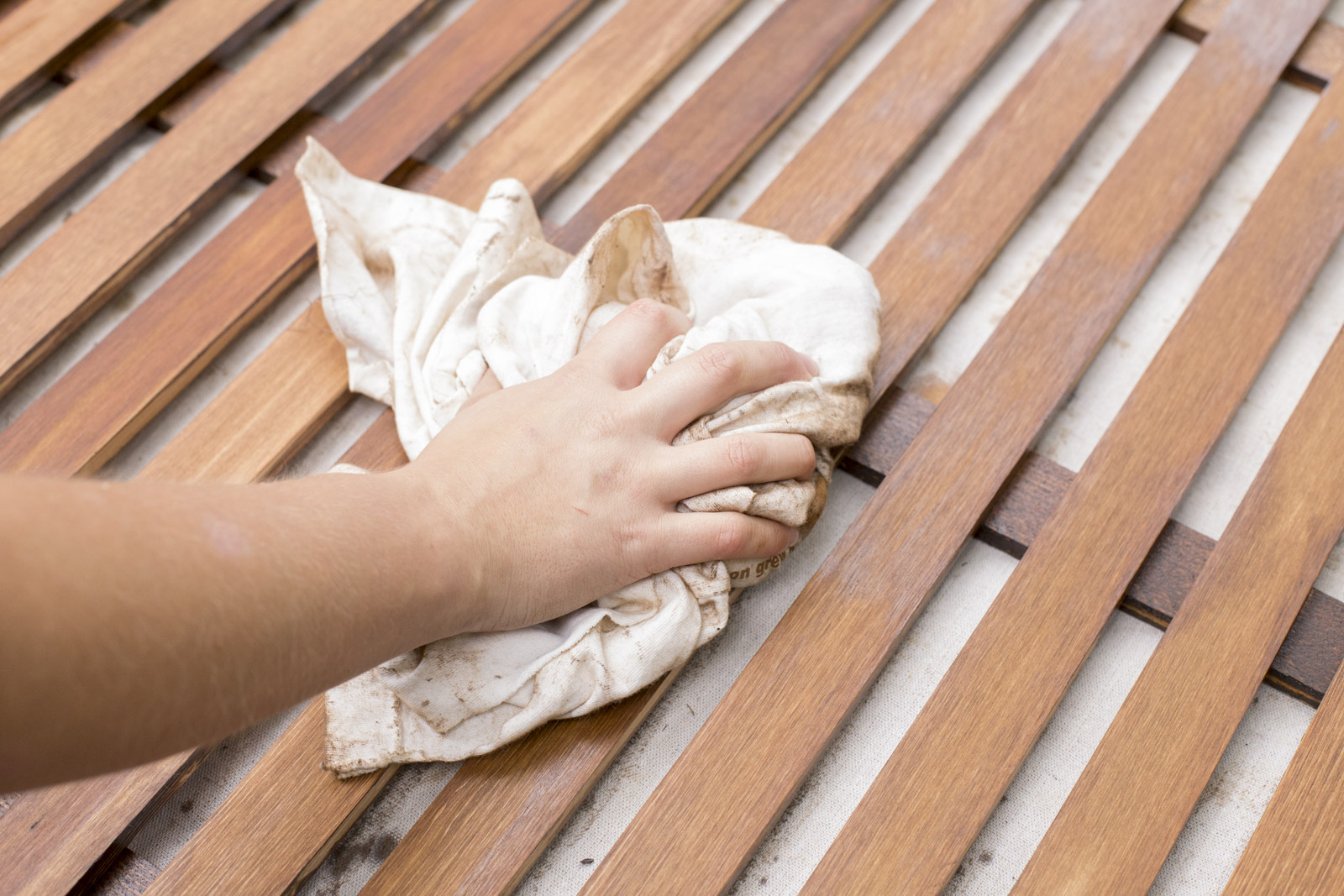
Step 3: Assemble the frame
The next step is to assemble the two-by-ten box. Line up the shorter 45" board on the inside of the 72" board. With a 11/64" drill bit, pre-drill two holes through the side of the lengthwise piece into the end of the 45" board. Secure with 4 1/2" screws.
We picked heavy-duty, black flat-head screws because they give a nice finished look. Repeat at the other end of the 72" board with the second 45" length. Turn the structure on its side to position the remaining 72" board and screw into place.
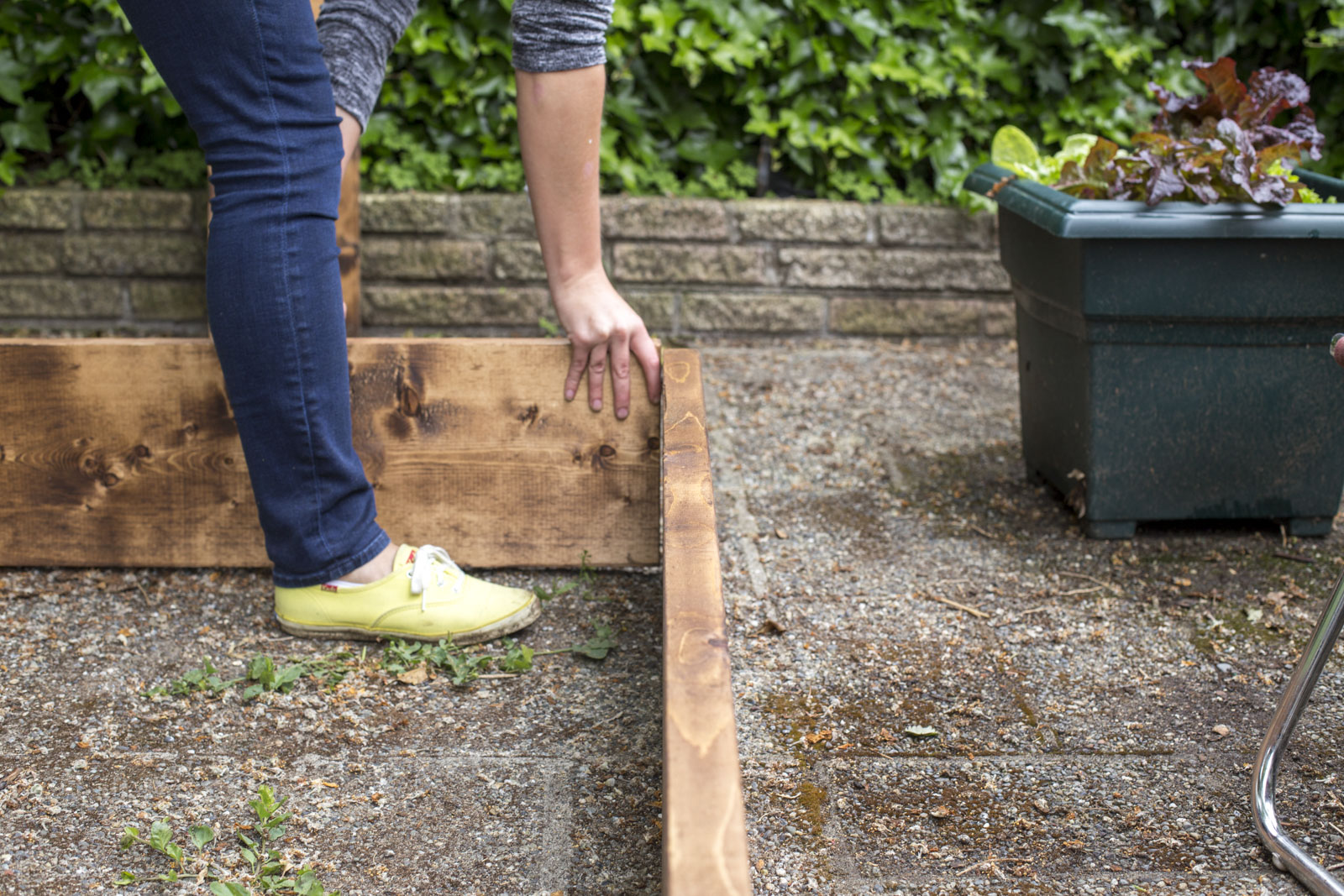
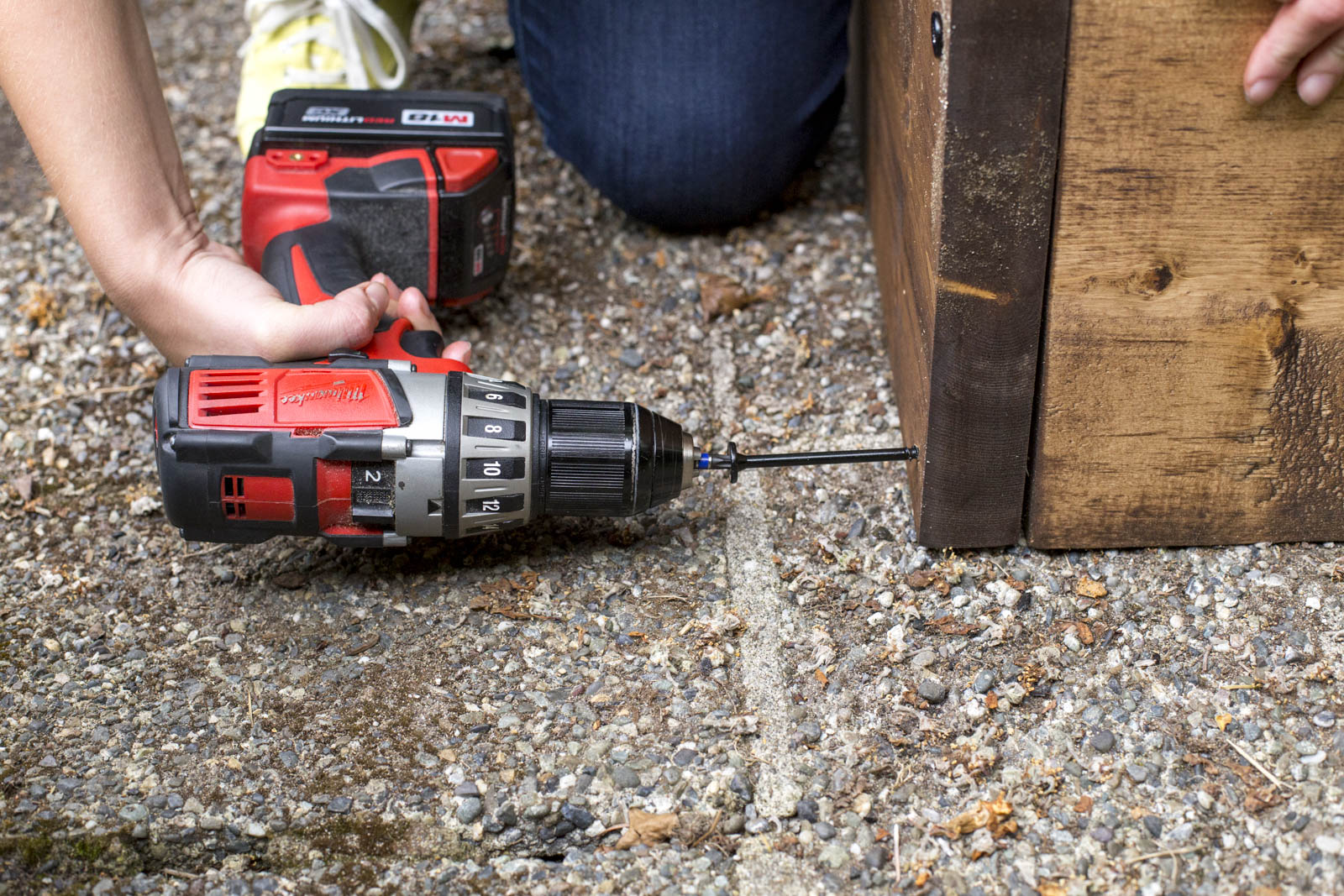

Step 4: Position the sandbox
Before moving the sandbox, level out a 4' x 6' spot in your backyard. Carry the sandbox into position and manipulate the dirt around it until it fits snugly. It doesn't have to be perfectly level; you just don't want large gaps or the sand may work its way out.

Step 5: Attach the landscape fabric
Roll out two pieces of landscape fabric and cut so the edges come up the sides of the box, about 3-4 inches on each side. Staple against the two-by-tens to secure in place. This will keep the sand separate from the dirt, and will help prevent weeds growing up from the dirt below the sand.
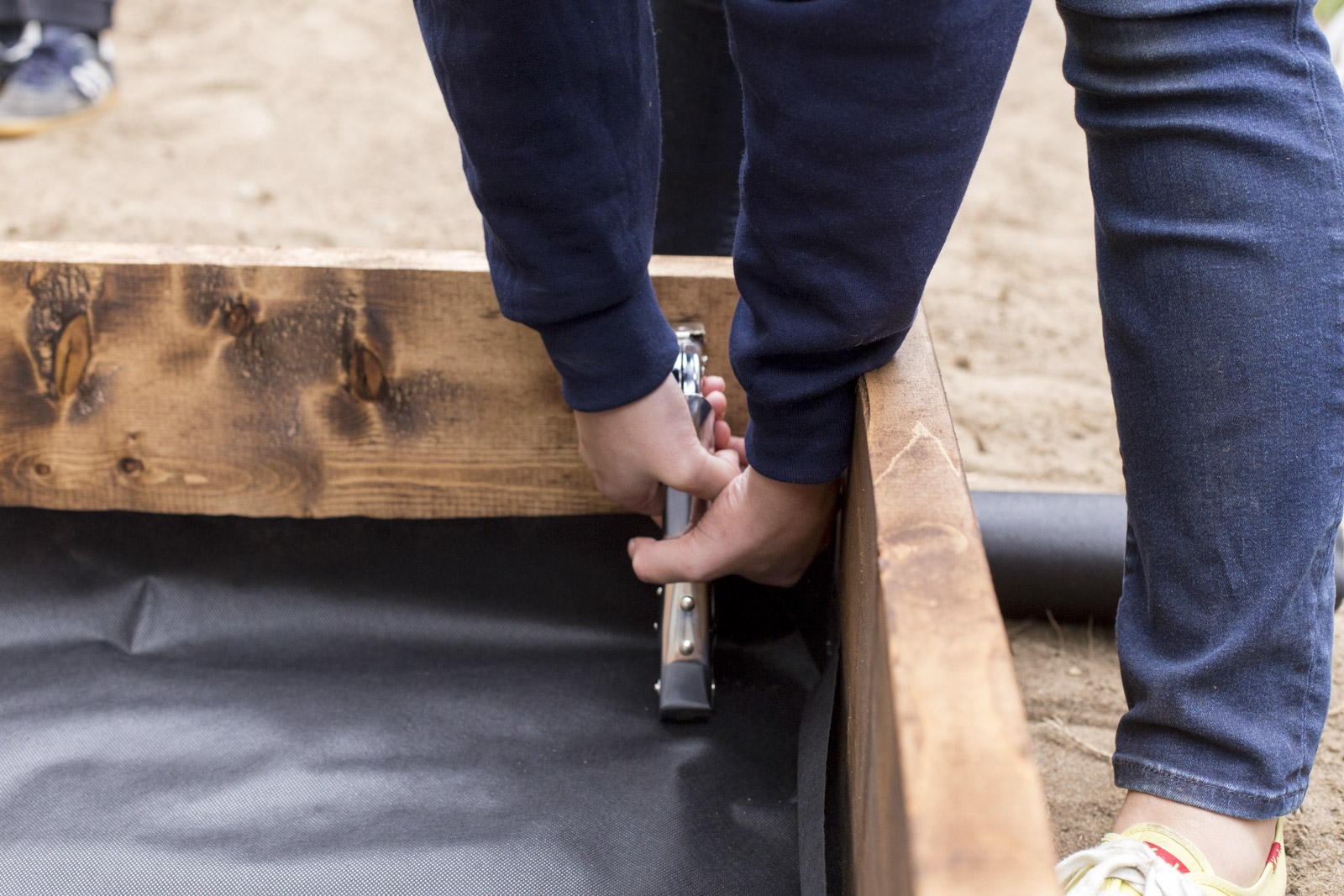
Step 6: Unload the sand
If you’re going to have Dunn Lumber deliver your sand, please give a few days notice for them to coordinate a delivery day with you. Deliveries are set for morning or afternoon, and they'll call you half an hour ahead to let you know they're coming.
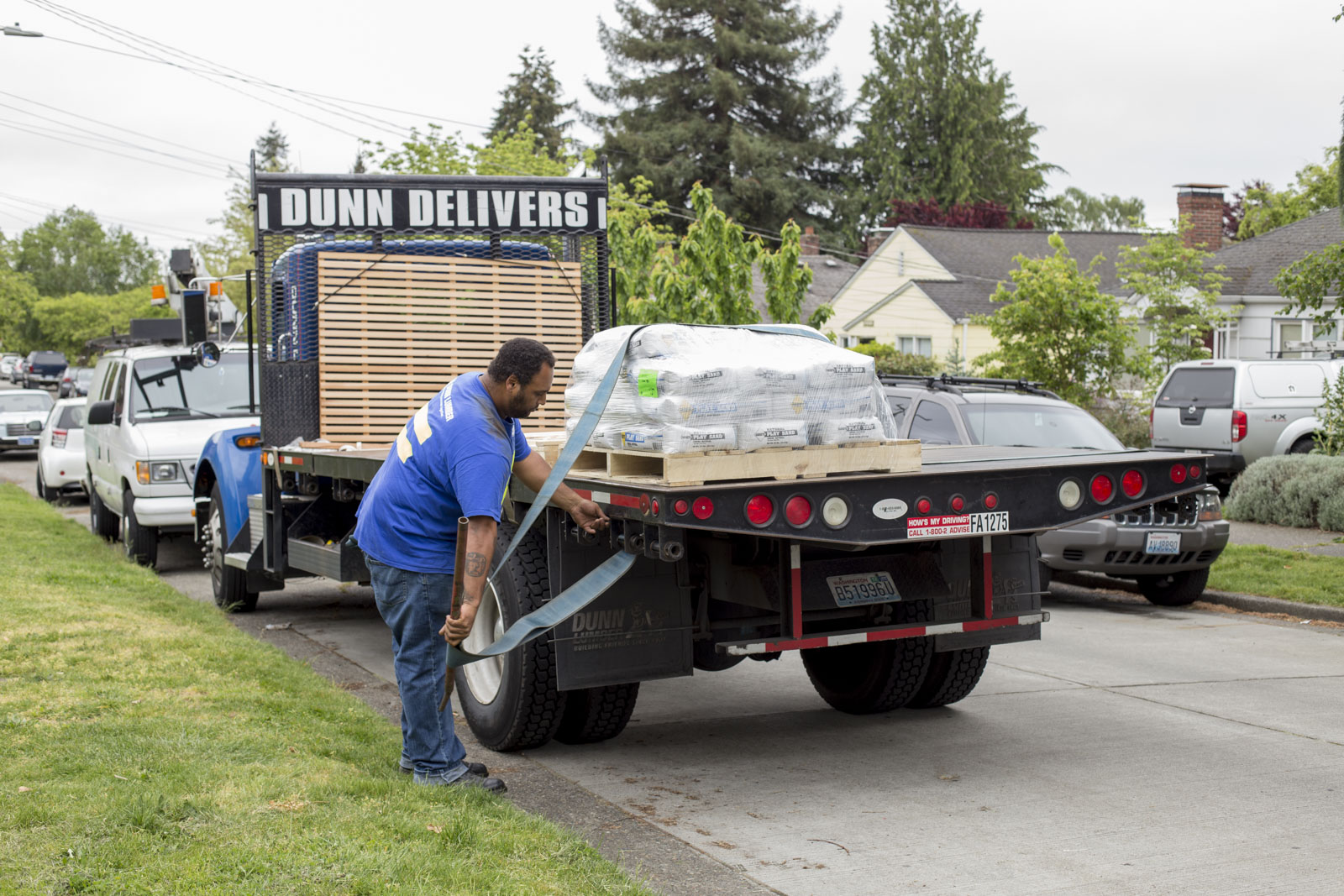
Step 7: Fill the sandbox
Fill the sandbox with the desired amount of sand. We ordered 25 bags of sand, ended up only using 20 and returned the other five to the store. (Did you know Dunn Lumber offers free returns, no questions asked?)
Let's talk about sand for a minute: There's been a fair amount of controversy over children's play sand in the last 5-10 years because play sand often contains silica, which has a bad reputation. (In large quantities it's been linked to health problems.) But let's expand on that: Exposure to large amounts of silica (like the amount you would interact with if you were in industrial situations like sandblasting) for a long period of time (we're talking 20-30 years) can cause health problems. But the risk of your child playing in a sandbox? It's about the same as going to the beach or walking by a construction site.
Dunn Lumber has worked with Sakrete for years, and we buy all our sand from them. If you're interested, here's what they have to say on the subject. If sand still makes you feel uncomfortable, or if you don't want to deal with sand tracked into your house, try pea gravel as an alternative.
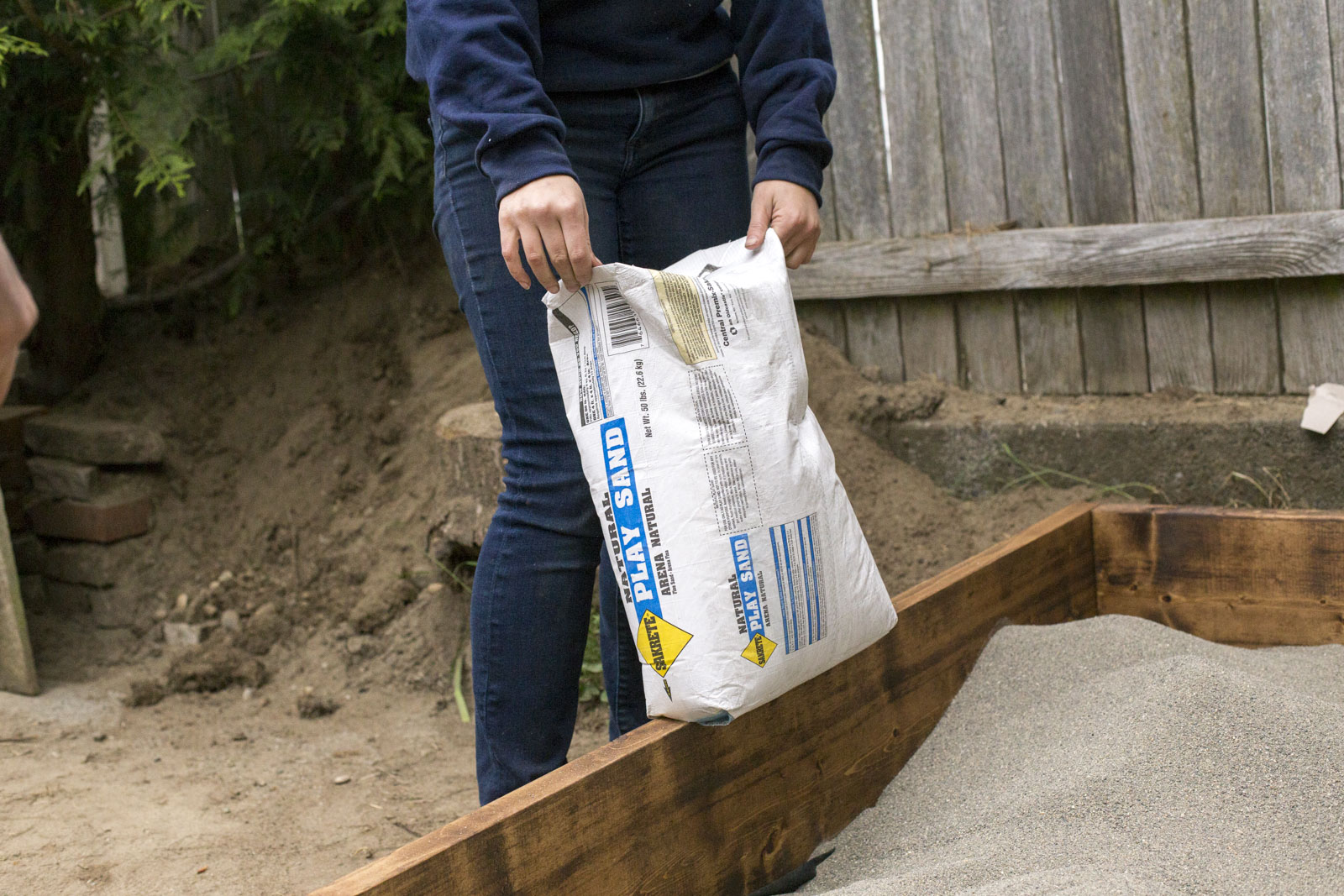
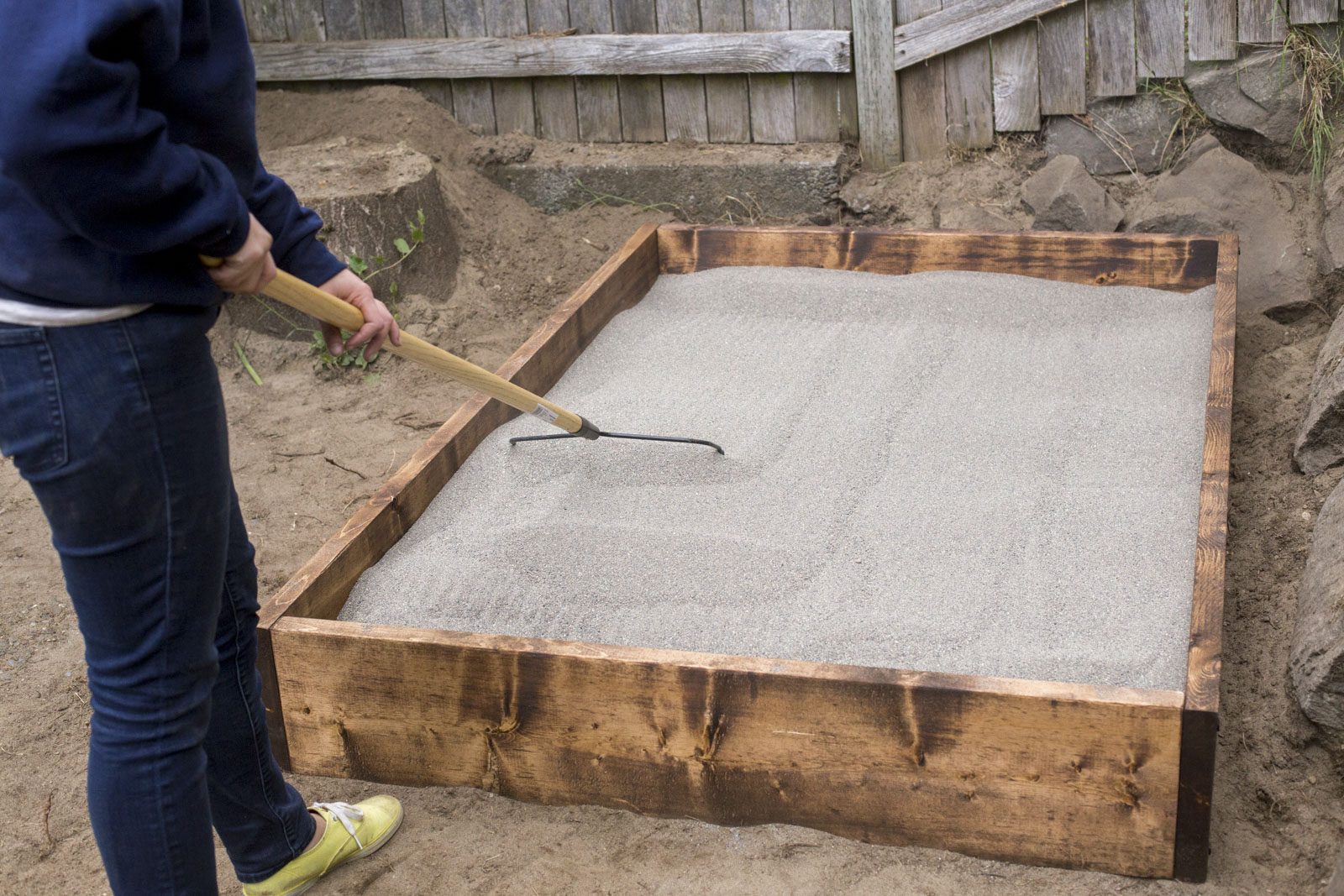
Step 8: Assemble the top
We designed this top with a few different goals in mind. We wanted something that would keep out rain, bugs, and kitty business, would be lightweight so kids have a chance at getting at the sand by themselves, and wouldn't make your backyard look like it's permanently under construction. So we came up with this tarp and lattice lid that's built at an angle so water runs right off.
Unfold your tarp and lay it flat on the ground. Using scissors, trim off the edges of the tarp and cut it to fit the size of the lattice with an inch or so overhanging on all edges. Spread the tarp across the bottom of the lattice with the the brown side facing down. Fold over the edges and staple into the bottom cross pieces. Staple along all the edges, pulling the tarp taught as you go. To prevent pooling, staple the tarp to the cross pieces in the middle as well.
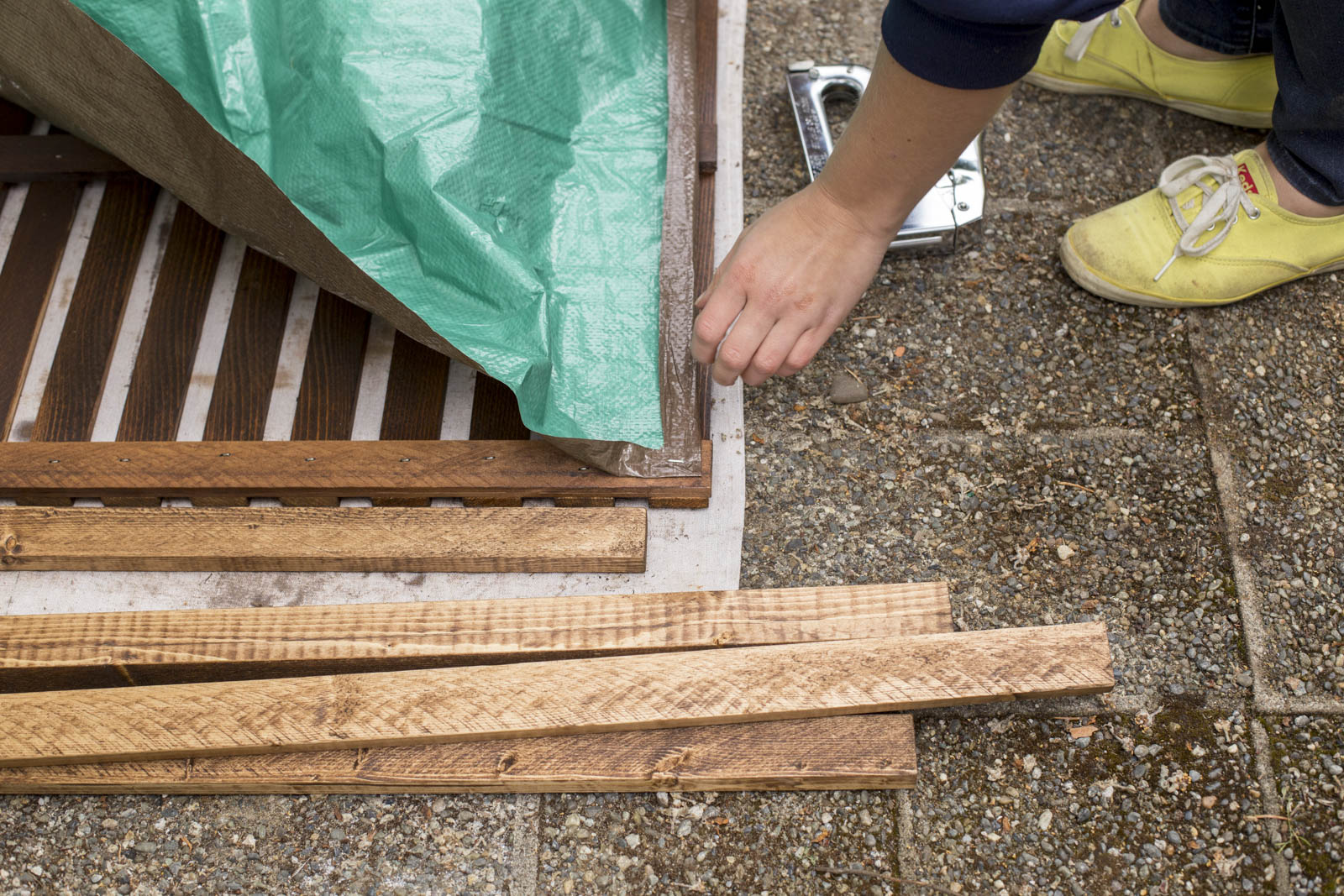
Step 9: Attach the frame
Secure the one-by-two and two-by-two frame to the bottom of the lattice. The combination of one-by-two and two-by-two boards, along with the gaps in the lattice, creates that slight slant for the top of the lid that allows the water to run off. Pre-drill with a 3/32" drill bit and use 2" screws to attach the two-by-two along the length of the lattice. Secure at each bottom cross piece, just like you did with the tarp. Position, pre-drill, and secure the one-by-two pieces at either end with 1 1/2" screws. Screw the final lengthwise one-by-two into place.
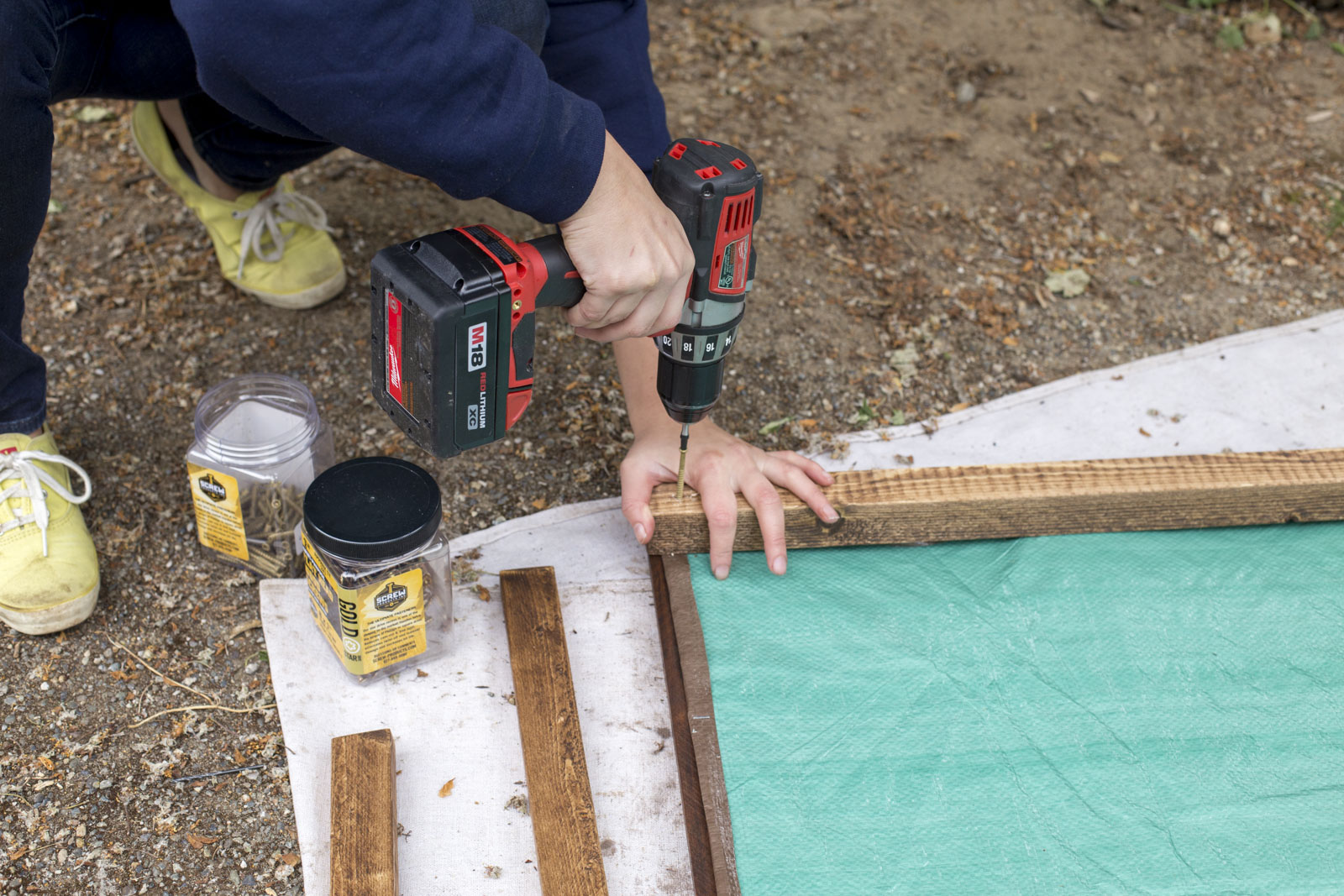
Step 10: Attach handles
Position the handles on the lattice and mark holes for pre-drilling. Use a Philips driver bit to screw the handles in place. We put our handles at either end of the lid, and because of the spacing of lattice slats in our lattice panel, we had to position them off center just a bit.
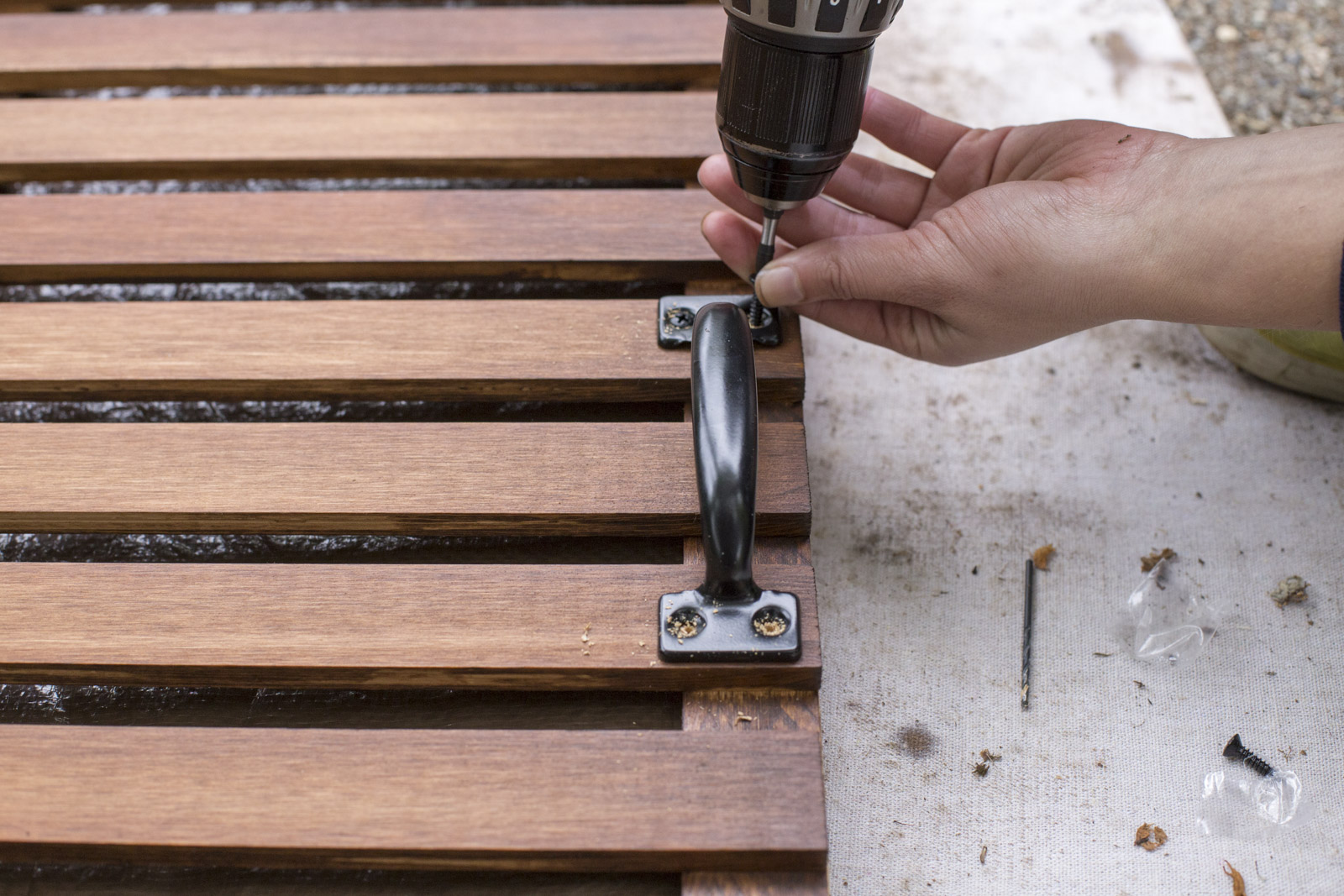
Step 11: Put a lid on it
Now that your sandbox is all ready to go, here are some tips on keeping your sand clean and bug-free:
- Keep your sandbox covered when not in use. Regularly remove leaves or other organic that may attract bugs.
- A nontoxic bug repellent will keep bugs from even getting close.
- Who knew: Cinnamon is a natural bug repellant! Mix a bottle or two of ground cinnamon into the sand to keep the bugs at bay and your sand smelling sweet.


Step 12: Enjoy your new DIY sandbox!
For added shade, we cut a 24" piece of 1" PVC pipe in half and used a hammer to secure it into the ground in two corners of the box. We ordered an umbrella from Amazon, and set the umbrella in the PVC pipe. Then it was time to play!
